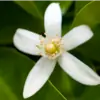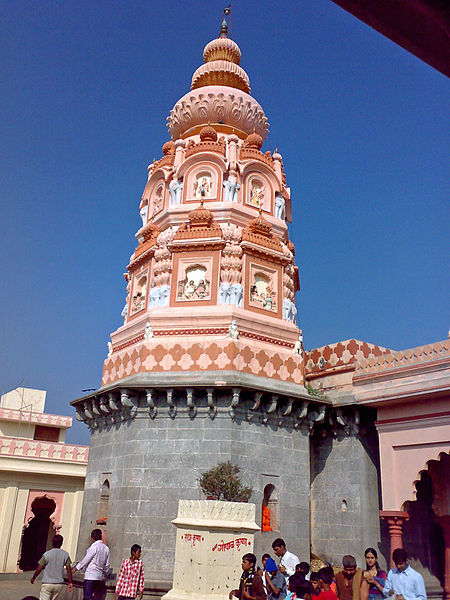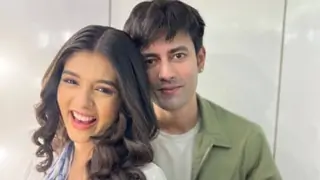In good olden days a Yaksha named 'KEELA' had been performing awful penance about holiest goddess Durga. Goddess Durga was pleased by his penance and appeared to him. She asked him to beg a boon. Keela was so happy by the words of goddess Durga and begged like this, "O holy Mother! you should always be in my heart. This is the one and only my desire". Listened goddess Durga and gave the boon with showering the lunar lights of smile and said, "My Son! You remain here at this holiest planes of river Krishna in the form of mountain. In Krithayuga, after the assassination of demons, I will remain in your heart".
As such, by the order of goddess Durga, Keela had been waiting in the form of mountain for goddess Durga. After sometime, in the Krithayuga goddess Durga killed Mahishasura who was a disaster for World. Then goddess Durga shined on the Keela mountain with eight arms in the form of MAHISHASURA MARDINI as she had given boon to keela. On this mountain, goddess Durga had been glowing with the lighting of crores of suns, with golden colour. Since that, Indra and all the deities praised her chanting "KANAKA DURGA" and they had been worshipping her daily. This mountain has attained the name "INDRAKEELADRI" from those times, since all the deities are visiting this mountain. Likewise, since goddess Durga shined on this mountain with golden colour glowing, the name 'KANAKACHALA' also attained by this mountain. Holy Indrakeeladri mountain became holiest after prevailing goddess Durga on this. Then Brahma Deva had a sacred intution that Lord Siva also should prevail on this mountain. For this holy purpose, he had performed 'Sata Aswamedha Yaga'. By this, lord Maheswara pleased with his devotion and rested in the form of 'Jyothirlinga' on this mountain. By the first time, Brama Deva worshipped lord Siva with Jasmin flowers (Mallika) with great devotion. Since Lord Siva was worshipped with Jasmin flowers by Brahma Deva, he has attained the name. 'MALLIKESA'. After this, in Dwaparayuga Arjuna, middle one of the Pandavas, awfully penanced about Parameswara, seeking 'Pasupatastra'. Parameswara wanted to test Arjuna and fau,ght with him. Finally Lord Siva pleased with the devotion and dauntlessness of Arjuna and offered him Pasupatastra. From that day 'MALLIKESA'had attained the name 'MALLIKESWARA' since he faught with Arjuna with greatest bravery. Days were passing on and on. In Kaliyuga, Jagadguru Sri Adi Sankaracharya observed that the Malleswara Jyothirlinga was in bad invisible condition and he reinstalled Malleswara Swamy at the Northern Part to the temple of Goddess Durga. From that day onwards, Malleswara Swamy also has been worshiping by all the devotees. Since goddess Durga has been prevailing at the Southern direction to Lord Malleswara, this Indrakeeladri renowned in the World as power prominent centre the "KANAKA DURGA KSHETRA"
The temple of Kanaka Durga the Goddess of power, riches and benevolence and the presiding deity of Vijayawada, is swarmed by lakhs of pilgrims for worship during the "Navarathri" festival which is celebrated with Religious fervour, pomp and festivity. The small but ancient temple of Kanaka Durga , a top the Indrakeeladri hill on the banks of the Sacred river Krishna in Vijayawada abounds with legends of historical interest.
Indrakeeladri is unique in that it has been the chosen abode of Kanaka Durga and Her consort Malleswara as Swayambhu (the self-existent one). Here Durga is one the right side of Malleswara as against the tradition of Goddesses taking their position on the left of their consorts. This shows that Shakthi is predominant on the Indrakeeladri.History
Adi-Sankaracharya visited the temple and installed the Srichakra and initiated workship of Kanaka Durga in vedic ways.
Hiuan Tsang, a Chinese traveler wrote that he has seen many stone inscriptions in the vicinity of the temple that revealed historic events.
Palakethu Bhupaludu made two inscriptions in the period 1150-1240 A.D. One related to unimpeaching Madhava Varma the ruler of this area. The son of poor women was killed when he fell under the wheels of the chariot of the kings son.
When she sought justice, Madhava Varma's advisers said that he should be punished with death. But they felt that the offender being the son of the king, could be spared the punishment. When Madhava Varma shown his impartiality by punishing his son with death, there rained gold on Vijayawada and both the boys were blessed to live again.
In yet another incident Malleswara stood by one of his staunch devotees Sripathi Pandithaiah, who believed there was no other God by Malleswara; and his stubbornness made the people ostracize him and he was even refused fire. The enraged Pandithaiah sought the blessings of Malleswara and cursed the people that they would not get fire any more, for he had taken possession of it, packed it in a silk cloth and hung it on a branch of a Sami Vriksham. The people had to apologise to Pandithaiah at the instance of their King, to get back the fire.
The nine-day festival of Navarathri ends on Vijaya Dasami Day when people worship arms and perform ayudha Pooja. Local chieftains used to celebrate the festival with pomp. Once a police officer refused them permission to display their arms on Vijaya Dasami day. He got a cable from that he was dismissed from service following many complaints against him. Terrified by the events, the Officer not only permitted the people to celebrate Vijaya Dasami but also took part in it. Later he got another cable canceling his dismissal order. Thenceforth, it became a tradition for policemen to celebrate Vijaya Dasami, which is still in vogue.
Kanaka Durga is specially decorated as Balatripura Sundari, Gayathri Annapoorna. Mahalakshmi, Saraswathi, Lalitha Tripura Sundari, Durga Devi, Mahissura Mardini and Raja Rajeswari Devi on each day of the Narvarathri festival. On Vijaya Dasami day, the deities are taken in a swan-shaped boat around the Krishna river, popularity known as "Theppotsavam".
Though a ghat road was laid in 1969, most of the pilgrims prefer to climb the steps leading to the temple an arduons task for women and children. Some devotees climb the hill, decorating the steps with turmeric powder and vermilion to redeem their pledge of Metla Pooja.
The number of pilgrims visiting the temple has been ever increasing and its present annual income is touching Forty Crores. A second prakara Mandapam is constructed with first floor on the North and West, besides under taking several other works for beautification and public convenience.
For the first time in the living memory "Sathachandiyagam" was performed in the temple from 28-12-1987 to 2-1-1988, for the benefit of mankind, as also to protect them from all evils.
This temple is under the administrative control of the Government of Andhra Pradesh, and is presently managed by an Executive Officer of the rank of Joint Commissioner of Endowments.Location
VIJAYAWADA is practically the centre of Andhra in all its aspects. It is an important junction in the Madras-Calcutta, Madras - Delhi routes, and probably the foremost town of Andhra. It contains three ancient temples viz., the Kanakadurga temple, the Malleswaraswamy temple and the Vijayeswaraswami temple. These are the three temples of Vijayawada.
Vijayawada is known in mythology as Vijayavata, and is mentioned in some inscriptions as Rajendracholapura also. it is a famous place of pilgrimage on the river Krishna, and 'has a temple dedicated to Lord Siva in his aspect of Malleswara or Jayasena. Sage Agasthya is said to have been the greatest devotee of this deity and admirer of the deity's several leelas.The origin or installation of Kanaka - durga Devi at Vijayawada is unknown. She is said to be Swayambu or selfmanifest. She also takes the aspect of Chandi or destroyer of the demon Durgama who was causing havoc among the peace - loving inhabitants of Dakshinapatha.
Mallikarjuna or the Malleswara as he is known in the Puranas is said to have been installed by Yudhishthira, the eldest of the Pancha Pandavas, as a token of their victory of the South. Thribhuvana Malla, Western Chalukya King of the 10th century A.D, historically constructed the temple.The installation of Vijayeswara is said to have been done by Arjuna, one of the Pancha Pandavas, to commemorate his victory with Lord Siva in the shape of Kirata or hunter.
The place Vijayawada is surrounded by many hillocks and the most important of them is Seethanagaram, while the less important is called the Kanakadurga or Kanaka konda. On the southern side of the Kanakadurga temple, is a hillock with sculptures bearing inscriptions, indicating the names of Gods and Goddesses cut below them. Most of these figures are forms of the Goddess in her aspect of Durga, which are dealt with in the Mantra Sastras. Traditionally these hills were originally continuous and at the commandof the Lord, they got separated, making enough space for the river Krishna to pass through.
One of these hills is called Indrakila, which is a famous hill mentioned in the Mahabharata as the place where the Pandava hero Arjuna obtained from Lord Siva an important weapon called Pasupatastra. The aspect of Lord Siva who appeared before Arjuna for granting him the boon is Kirata or the hunter. Bharavi in his celebrated Kavya "The Kirtarjuneeya" has immortalized this. The temple of Vijayeswara is attributed to Arjuna to commemorate the event of obtaining Pasupatha. The shrine has the representation of this and many other events of the Mahabharata commemorated in sculpture.Regards
krishna




















 -
-




















